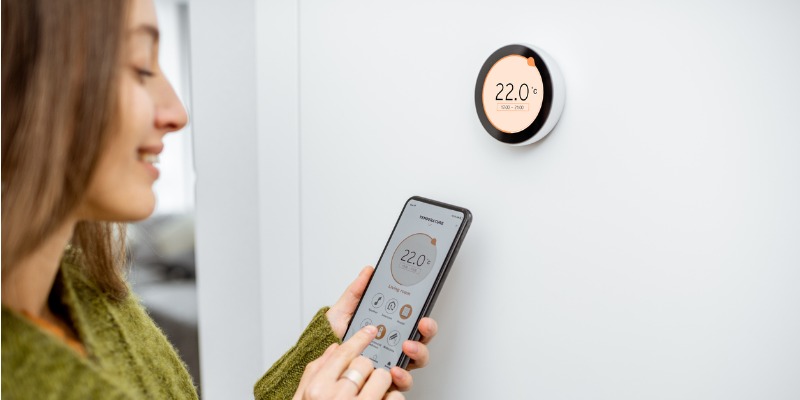
It is not uncommon to experience different temperatures throughout your house. However, although these variances are common, they are not normal. There are a number of contributing factors that can cause these differences such as sun exposure and insulation. Here we look at how to even out the temperature in the house with seven tips to keep everyone comfortable all year round.
1. Check the Air Vents for Blockages
Air vents can experience blocks either directly above the vent such as furniture obstructions, or just below the air vents like a jammed toy. Check your home to look for blocks and also ensure all the vents are open. Even a single closed or blocked vent can affect how air flows throughout your home.
2. Balance Out Air Vent Air Flow
If you find some rooms are freezing and others too warm, partially closing heating vents can help send equal amounts of cool or warm air throughout the house. If you want more warmth delivered to colder rooms, you would partially close the vents in your hottest rooms. This allows more hot air to reach the colder rooms and resolve uneven temperatures in the house.
3. Don’t Set the Fan to Auto
Most homeowners don’t give much thought to the fan setting on their thermostats. As a result, they tend to stay set to auto. You actually want the fan set to ‘on’ at all times to improve air circulation. As heat cycles are complete, the heater will keep circulating air to keep all the rooms equally heated. On auto, the fan only operates when heat is being sent through the house which actually stagnates airflow when the heating cycle ends. Although you can see a slight uptick in your monthly energy bill of about $5, your home will be far more comfortable.

4. Have Your Ducts Inspected
You could also have an issue with your air ducts. People often focus on cleaning air ducts but fail to inspect them. Heat distribution in the house can be related not only to duct blockages but often to duct leaks. Air has to travel far through your ducts, losing the temperature as it moves. As a result, if you have any leaks in your ductwork, it makes it harder to deliver warm or cool air to the areas furthest away from your HVAC system. It also puts more strain on your system which can lead to costly repairs.
5. Have Your Ducts Cleaned
An inspection can also tell you if you need your ducts cleaned. Clean, well-sealed ducts allow proper airflow so conditioned air reaches each room so they are nicely heated or cooled.
6. Repair or Replace Attic Insulation
Your attic insulation is crucial to keeping your home at the right temperature. Warm air can escape through the roof in the winter and enter the home in the summer. This could be the reason you have uneven cooling in your house or issues with warmth on the upper floors. Proper insulation will ensure your home remains comfortable all year round.
7. Install a Smart Thermostat
A smart thermostat allows you to gain more control over your home’s temperatures. You can schedule automatic temperatures that adjust throughout the day, and even adjust temperatures using your smartphone from anywhere. The smart thermostat also learns to adapt to how your home releases and absorbs heat throughout the day and adjusts to improve efficiency.
These tips tell you how to even out the temperature in your house, but may not be effective in some cases. Do you have questions about your home HVAC system? Contact our experts today.






